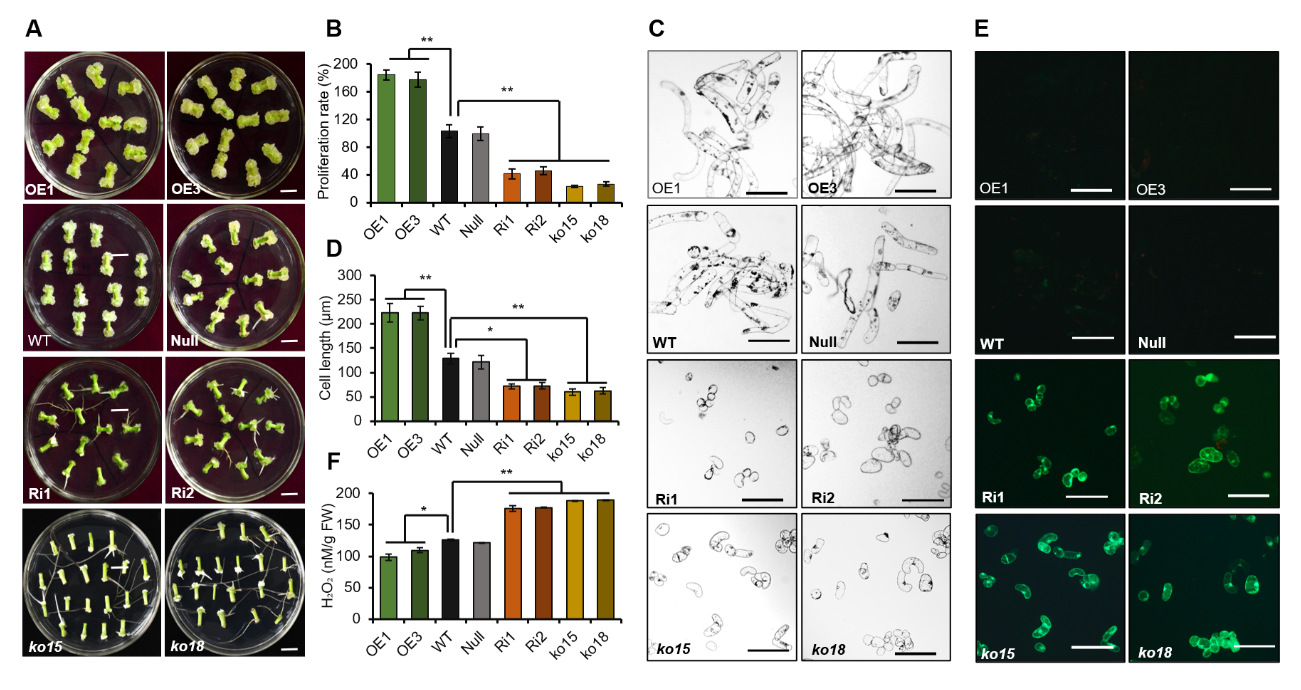Abstract
Wounded plant cells can form callus to seal the wound site. Alternatively, wounding can cause adventitious organogenesis or somatic embryogenesis. These distinct developmental pathways require specific cell fate decisions. Here, we identify GhTCE1, a basic helix-loop-helix (bHLH) family transcription factor, and its interacting partners as a central regulatory module of early cell fate transition during in vitro dedifferentiation of cotton (Gossypium hirsutum). RNAi- or CRISPR/Cas9-mediated loss of GhTCE1 function resulted in excessive accumulation of reactive oxygen species (ROS), arrested callus cell elongation, and increased adventitious organogenesis. In contrast, GhTCE1-overexpressing tissues underwent callus cell growth, but organogenesis was repressed. Transcriptome analysis revealed that several pathways depend on proper regulation of GhTCE1 expression, including lipid transfer pathway components, ROS homeostasis and cell expansion. GhTCE1 bound to the promoters the target genes GhLTP2 and GhLTP3, activating their expression synergistically, and the heterodimer TCE1-TCEE1 enhances this activity. GhLTP2- and GhLTP3-deficient tissues accumulated ROS and had arrested callus cell elongation, which was restored by ROS scavengers. These results reveal a unique regulatory network involving ROS and lipid transfer proteins, which act as potential ROS scavengers. This network acts as a switch between unorganized callus growth and organized development during in vitro dedifferentiation of cotton cells.

full text https://academic.oup.com/plcell/article-lookup/doi/10.1093/plcell/koac252